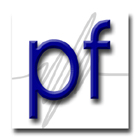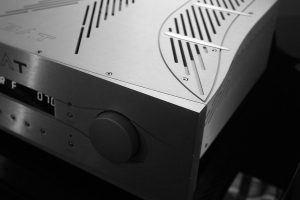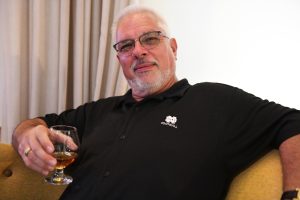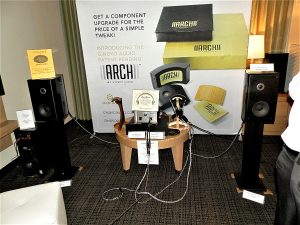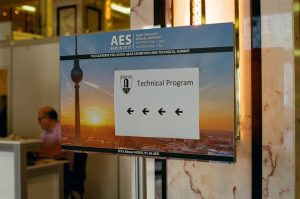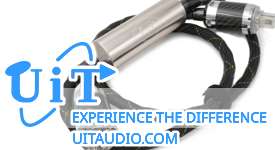What the NAMM show means to high-end audio and why go?
Starting out 2018 at the CES
[Cookie Marenco is President of Blue Coast Records and Downloads NOW!]
Cookie Marenco of Blue Coast Records
For an audio engineer or someone in the music industry, January was and is a month filled with conventions you don't want to miss. Sundance film festival, CES, Midem (now moved to June) and NAMM are on our dance cards if we can manage. We've also got the Grammys, football playoffs, end of year tax filings, and recuperation from 6 weeks of holidays. It's hard to choose when it comes to deciding which event to drop.
The last 10 years we've moved our attention to going to the high-end conventions and cutting out just about everything else. It's very satisfying to be with music lovers and manufacturers who appreciate the level of work we do. Appreciation for high-end recording doesn't happen at the other events. We'd go to an occasional CES show and as others have noted, it's not really the place for a growing audience interested in high-end audio.
CES: not much for high-resolution audio
We made the decision last summer to attend CES 2018 and support the High Resolution Pavilion in the main convention hall. Our purpose was to talk to engineers, producers and manufacturers about the growing interest in high resolution music. Hopefully we'd get new content in the future that was in high resolution.
Between the convention center and the Venetian, Universal Music showed a car with high resolution capability while audiophile manufacturers showed their products new and old. Dolby and others talked about immersive sound. Lots of manufacturers had portable devices showing high resolution playback or multiple small speakers that sparkled with changing lights. NARAS had their guidelines for high resolution talked about.
At the CES High Resolution Pavilion, top engineers (some my friends) talked about recording in 9624 (96kHz/24-bit) WAV as a monumental advancement. If you think that sounds strange, sadly, 95% of all digitally recorded music is still at 44.1 (my estimate based on discussions with recording engineers) so discussions of 9624 seemed welcomed. DSD was an afterthought at CES.
We achieved ‘good enough' for our goals at CES but didn't see hopeful and enthusiastic young engineers yearning for better sound. We didn't see many other distributors connecting the music to the end listener.
Instead we saw older engineers (like myself) pounding fists for 9624. Okay… maybe this is as good as it's gonna get for a while. As a DSD distributor, we would have to live with that.
Then came NAMM… National Association of Music Merchants…..
Last September, a chance meeting with Tascam/Teac folks led to them asking us to join them in their booth at the January NAMM. A few years ago Tascam launched a DSD 2 channel recorder and Teac had a consumer/semi-pro DAC that plays back DSD256. We didn't own either pieces of gear but that didn't seem to matter to Teac/Tascam. They were happy enough to give us a space in their booth to bring our catalog of music and demonstrate the gear. They loved our music at Blue Coast.
In the back of my mind I thought... "This is crazy to go to CES and NAMM with all the end of year commitments in January." It means least 15 days out of the studio with preparation, another 5-10 days. Add to that... we were launching Blue Coast PRIME (https://bluecoastmusic.com/blue-coast-prime) and it's first Episode of new music. Commitments were made and it was too late to back down.
Carol Clark and Dave Clark of Positive Feedback with Cookie Marenco of Blue Coast Records at RMAF 2015
To my surprise, NAMM proved to be the heavy winner of an event. More than 100,000 in attendance and dedicated to music. Every person holding a manufacturing or other job in the industry was at one time a musician. This is a show of professionals and hobbyists who are serious about making music.
Out of all the people at NAMM, very few knew of the high-end audio movement. There is a disconnect about who audio engineers perceive their listeners are and what is available in high resolution audio—except for cheap ways to create vinyl recordings.
Our tasks was to inform these artists and engineers of an alternate reality where people cared about sound—a world of music lovers wanting to buy high quality music in higher resolutions. It was like bringing food to the starving.
NAMM with Tascam proved to be an exceptional show for us. Fledgling engineers came to see affordable products, older engineers came to see the Portastudios displayed and remember “the good old days of starting out".
I grew up an audio snob even as I was learning my craft and building my studio. I owned a Tascam cassette machine and the MX2424 recorder for backup purposes. Otherwise, I grew up with Millennia, Neve, and Manley gear and an Otari 2" 24 track.
What I discovered at NAMM was the brilliance of Tascam's vision for the future. The Tascam/Teac booth was a melting pot of society's music—past, present and future. Tascam brought affordable recording and playback gear that the masses could buy whether pro or semi-pro or consumer. It was a cost-effective entrance to recording.
We were given a lovely space for Blue Coast complete with their Teac DAC, an affordable headphone distribution box and 4 sets of inexpensive ($20) headphones. Not exactly your top shelf line of audiophile quality gear that one sees at the high-end shows... but this was the reality of what many entry level audio engineers are looking at. The total package for playback probably cost less than $1500—a price engineers and students could look at and dream.
We provided the dream with a 60 second demonstration of DSD vs CD quality audio. We knew the source because we had recorded all the music. We delighted seeing the eyebrows raise on students, musicians and engineers hearing the difference between DSD and CD quality downloads.
And the good news... 100% of those who listened could hear the difference between DSD and CD quality. We collected more cards than ever, met artists recording in DSD and for the first time, found enthusiasm with young audio engineers from every genre of music. Since the show, I've been besieged with emails from musicians, engineers and producers wanting to be involved in high-end music.
I was inspired by the NAMM show. I'll be writing about the show in several parts. Stay tuned to hear about the guests and new music coming in high resolution audio.
As always, enjoy your music!
Cookie Marenco
Blue Coast Music
Visit our new high-end music store at http://www.BlueCoastMusic.com
Photographs and image processing by David W. Robinson






